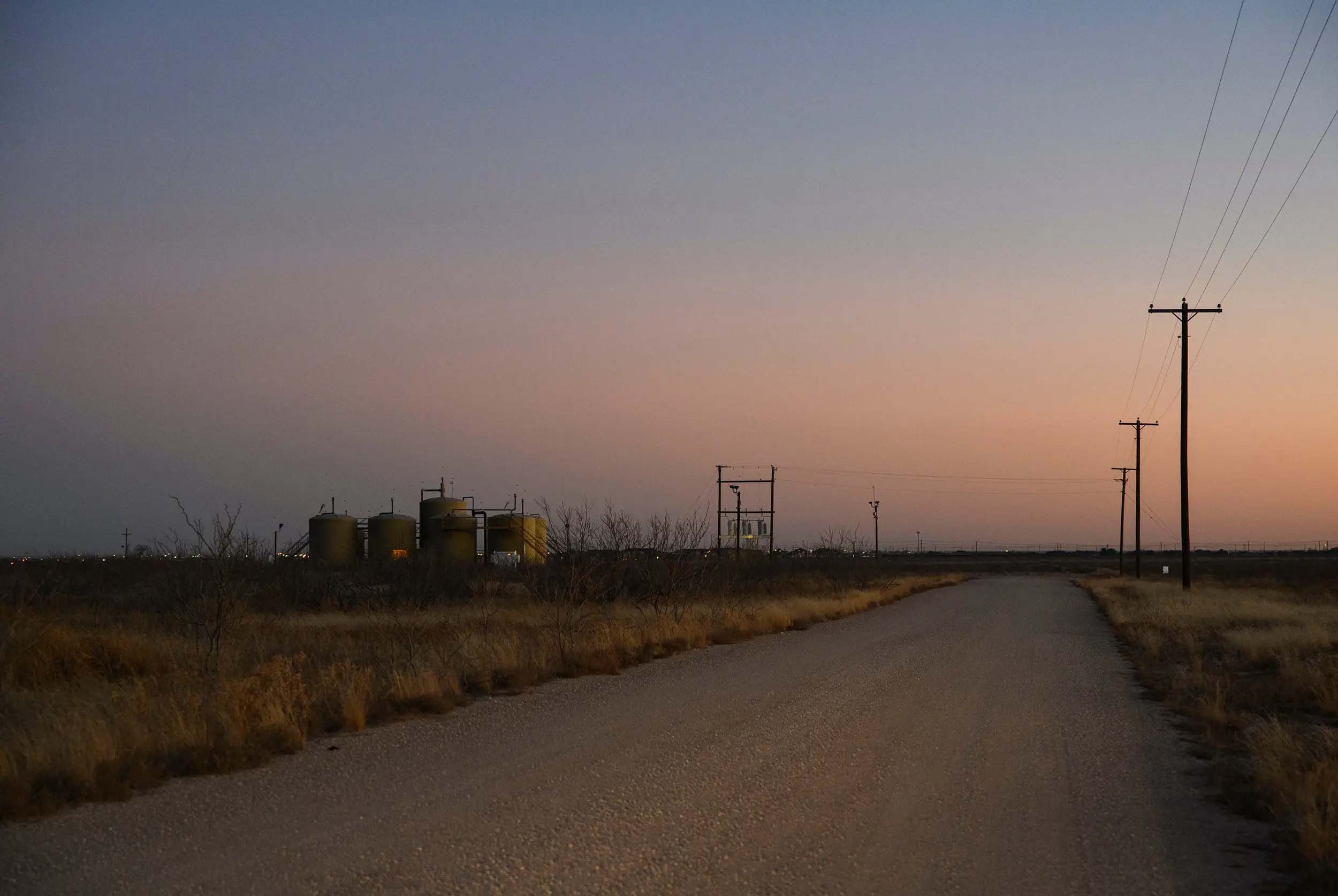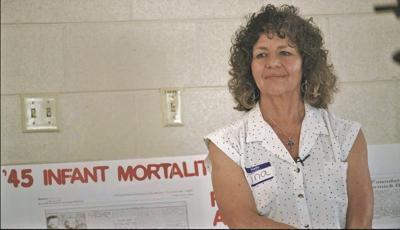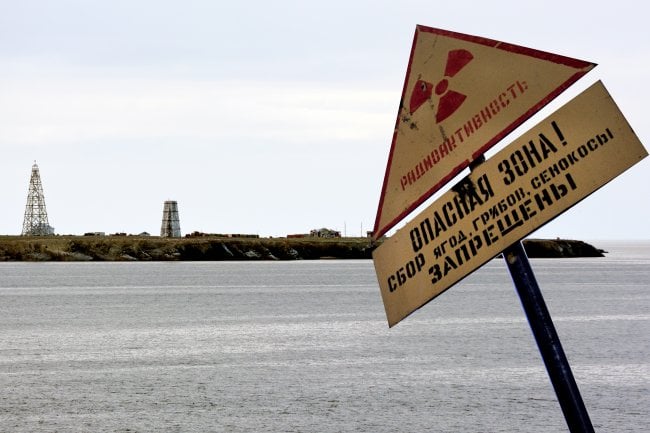QUOTE OF THE WEEK
Nothing Found
It seems we can’t find what you’re looking for. Perhaps searching can help.
LANL’s Central Mission: Los Alamos Lab officials have recently claimed that LANL has moved away from primarily nuclear weapons to “national security”, but what truly remains as the Labs central mission? Here’s the answer from one of its own documents:
LANL’s “Central Mission”- Presented at: RPI Nuclear Data 2011 Symposium for Criticality Safety and Reactor Applications (PDF) 4/27/11
Banner displaying “Nuclear Weapons Are Now Illegal” at the entrance in front of the Los Alamos National Lab to celebrate the Entry Into Force of the Nuclear Weapon Ban Treaty on January 22, 2021
Nothing Found
It seems we can’t find what you’re looking for. Perhaps searching can help.
Follow the Money!
Map of “Nuclear New Mexico”
In 1985, US President Ronald Reagan and Russian President Mikhail Gorbachev declared that “a nuclear war cannot be won and must never be fought.”

Waste Lands: America’s Forgotten Nuclear Legacy
The Wall St. Journal has compiled a searchable database of contaminated sites across the US. (view)
Related WSJ report: https://www.wsj.com
NEW & UPDATED
Comments to the New Mexico Environment Dept. in Support of Comprehensive Cleanup at the Los Alamos National Laboratory and a Request for a Hearing
Nuclear Watch New Mexico November 6, 2023 | Email
New Mexico Environment Department
Hazardous Waste Bureau
2905 Rodeo Park Drive, Building 1
Santa Fe, New Mexico, 87505-6303
By email to neelam.dhawan@env.nm.gov
SUBJECT: Support for Comprehensive Cleanup at the Los Alamos National Laboratory and a Request for a Hearing
Dear New Mexico Environment Department:
We strongly support the Environment Department’s mandate for comprehensive cleanup at the Los Alamos National Laboratory’s Material Disposal Area C, an 11.8-acre dump consisting of seven unlined pits and 108 shafts of radioactive and toxic wastes. This mandate will help maximize protection of human health and the environment and ensure that our critical drinking water resources are permanently protected.
We completely agree that the cleanup remedy for Area C must, in NMED’s own words, “consist of waste excavation, characterization, and appropriate disposal of the buried waste,” plus a soilvapor extraction system to remove the underground plume of volatile organic compounds (which are typically carcinogenic solvents).
Another large earthquake shows seismic activity continues to increase in West Texas, experts say
The 5.2 magnitude earthquake is tied for the fourth strongest in Texas history. It occurred in an area where oilfield companies have long been injecting wastewater from fracking underground.
By Erin Douglas, The Texas Tribune | November 9, 2023 texasstandard.com

A 5.2 magnitude earthquake was recorded in West Texas early Wednesday near the border of Reeves and Culberson counties, according to the U.S. Geological Survey.
The earthquake that struck around 4:30 a.m. Central northwest of Pecos is tied for the fourth strongest recorded in Texas, according to the Bureau of Economic Geology at the University of Texas at Austin, and could be felt as far away as El Paso and Roswell, New Mexico.
The number and strength of earthquakes in West Texas has dramatically increased after years of hydraulic fracturing activity in the region. A routine practice of injecting the contaminated, salty water that comes up during the oil production process deep underground has been linked by scientists to the increase in seismic activity in oilfields.
Oil & Gas Industry Joins Fight Against Nuclear Waste Site Proposed in Southeast New Mexico
“The cross-country transport, consolidation, and interim storage of America’s entire inventory of spent nuclear fuel should only be considered once a permanent repository is underway and should never occur absent consent from affected communities,” – Nov 1. Letter from the Permian Basin Coalition (Occidental Petroleum, Concho Resources, Diamondback Energy and Fasken Oil and Ranch)
By Adrian Hedden, Carlsbad Current-Argus | November 7, 2023 currentargus.com
Some of the biggest oil and gas companies in the Permian Basin came out against a proposed nuclear waste facility in southeast New Mexico.
The basin spans southeast New Mexico and West Texas and is regarded as one of the most active fossil fuel regions in the world. It was forecast to produce about 5.9 million barrels of oil per day (bopd) in November, according to the Energy Information Administration. That is about half of the more than 12 million bopd of total U.S. output.
All that oil production is driven by some of the world’s largest energy companies establishing heavy operations in the region.
State program to protect waterways called costly but necessary
“…It’s imperative for the state to gain more autonomy, even if the price seems steep, because the U.S. Environmental Protection Agency recently issued a final rule that cemented the high court’s decision into official policy, leaving about 95% of New Mexico’s waters unprotected, the regulators said.”
By Scott Wyland, Santa Fe New Mexican | November 2, 2023 santafenewmexican.com
State regulators have estimated the time and money required to develop full authority to protect New Mexico’s rivers, streams and lakes in the aftermath of a U.S. Supreme Court decision that sharply narrowed the federal government’s power to regulate wetlands and waterways.
It will cost the state $7 million to $9 million a year to run a program that regulates all types of polluted discharges into state and federal waters and will take seven to 10 years to establish, state officials told the Buckman Direct Diversion Board on Thursday.
Creating a permitting program to cover discharges going into designated waters of the state could be achieved within five years, even though those waters make up a much larger array than the ones that fall under federal jurisdiction, Environment Department officials said.
The state program would be an important step, but only a step, of the river diversion, a joint city of Santa Fe and Santa Fe County project that draws water from the Rio Grande, they told the board.
LANL reports glove box breach, tritium drift weeks apart
“…Anti-nuclear activists contend the increasing number of glove box mishaps are part of a trend that will continue as the lab processes more plutonium, partly in pursuit of making the bowling ball-sized cores, or pits, that detonate warheads.
“It’s reasonable to assume it will accelerate with expanded [pit] production,” said Jay Coghlan, executive director of Nuclear Watch New Mexico.”
By Scott Wyland, Santa Fe New Mexican | November 1, 2023 santafenewmexican.com
A Los Alamos National Laboratory worker recently punctured a glove used to handle radioactive material in a sealed compartment, and wind blew airborne tritium into the liquid waste treatment facility a few weeks earlier, a federal watchdog reported.
The worker punctured the glove while handling a sharp measuring caliper instead of an electronic device that’s normally used for the task but was disabled, according to an October report by the Defense Nuclear Facilities Safety Board.
The breach contaminated a protective glove the worker was wearing but not the skin, and it didn’t cause an airborne radioactive release, the report said.
This is the second glove box breach in as many months and among a half-dozen the safety board has reported this year.
State, feds will seek independent expert over chromium plume threatening San Ildefonso Pueblo
“Scott Kovac, Nuclear Watch New Mexico’s operations director, agreed getting a third set of eyes on the project would be helpful, especially if this expert can suggest an alternative to the pump-and-treat method.”
By Scott Wyland, Santa Fe New Mexican | November 1, 2023 santafenewmexican.com
Federal officials said Wednesday they were pursuing an independent expert to help resolve their dispute with the state on how to clean up a decades-old toxic chromium plume under Los Alamos National Laboratory that has worsened since pumping was shut down seven months ago.
State regulators in March ordered the U.S. Energy Department to stop extracting tainted water, treating it and injecting it back into the 1.5-mile-long plume to dilute the pollution, contending this approach pushed the contaminants toward San Ildefonso Pueblo and deeper into the aquifer.
At a Wednesday meeting, a federal cleanup manager reiterated the Energy Department’s position the pump-and-treat method was reducing the hexavalent chromium and keeping it from spreading to the pueblo — and with the work halted, the contamination is rebounding.
“We’ve erased a lot of the gains we’ve made over the last few years of operating [by shutting down],” said Michael Mikolanis, head of the Energy Department’s environmental management in Los Alamos.
The worsening situation increases the urgency to bring in a third party that can provide fresh analysis and a different perspective to help move the state and federal agencies past their impasse, Mikolanis said.
Santa Fe New Mexican MY VIEW: See the Untold Chapter of the Oppenheimer Story

By Lois Lipman, SANTA FE NEW MEXICAN | October 21, 2023 santafenewmexican.com
President Joe Biden visited New Mexico a few weeks ago promoting “Bidenomics,” but for a group of New Mexicans from the Tularosa Basin, it was his brief exchange with Tina Cordova that was monumental.
Cordova is a descendant of the people who called a sparsely populated area of south-central New Mexico home — a group that would find not only their lives changed, but also the lives of their future children and grandchildren as a result of what happened the morning of July 16, 1945. So why did Biden stop to talk to Tina Cordova?
Cordova is a fourth-generation cancer survivor from the radiation of the Trinity Test and has been on a decadeslong crusade for the unwitting victims of the world’s first atomic bomb…
Amid current upgrades, commission foresees replacing LANL plutonium facility
An anti-nuclear watchdog group contends the pits’ main purpose is to be fitted into the new warheads — not to upgrade existing weapons — and expanding the arsenal requires more pits than the lab can make.
“The commission ill-advisedly wants a replacement for LANL’s plutonium pit production facility to help fuel the new nuclear arms race with new-design nuclear weapons,” Jay Coghlan, executive director of Nuclear Watch New Mexico, wrote in an email. “This is so tragic and unnecessary when no future pit production is scheduled to maintain the safety and reliability of the existing, extensively tested stockpile.”
SCOTT WYLAND, SANTA FE NEW MEXICAN | October 20, 2023 santafenewmexican.com
A congressional commission foresees eventually replacing Los Alamos National Laboratory’s plutonium facility — despite the billions of dollars being spent to refurbish it — as part of its recommended strategy to bolster the U.S. nuclear arsenal to keep pace with Russia and China.
The Congressional Strategic Posture Commission has released a 160-page report that pushes for the U.S. to boost its nuclear capabilities and conventional military to deter what it describes as increasingly aggressive and well-equipped adversaries, namely Russia and China.
One section calls for improving and expanding infrastructure to research, develop and make better weaponry at a higher volume — and buried in a footnote is a statement of how the upgrades would include replacing the lab’s plutonium facility, known as PF-4, for production and science.
No timeline is given for when PF-4 might be phased out, but the document confirms anti-nuclear critics’ longtime contention the federal government is spending billions of dollars on a facility with a finite life.
At the moment, this is the only facility in the country that can produce the bowling-ball-sized plutonium cores, or “pits,” to detonate warheads. Nuclear security officials want the lab to make 30 pits a year by 2030, saying they’re needed to modernize the arsenal and equip two new warheads being developed.
Two Businessmen Charged for $1M Kickback Scheme Involving Nuclear Weapons Components
An indictment was unsealed today in Kansas City, Kansas, charging two businessmen for an alleged scheme to fraudulently steer and award subcontracts by a major engineering firm for work on nuclear weapons manufacturing projects for the National Nuclear Security Administration’s Kansas City National Security Campus (KCNSC).
PRESS RELEASE, US DEPT. OF JUSTICE | October 19, 2023 justice.gov
According to court documents, from at least 2011 through approximately January 2021, Michael Clinesmith, 67, of Kansas, allegedly solicited and received kickbacks and bribes from Richard Mueller, 63, of Missouri, in exchange for steering subcontracts from Clinesmith’s employer to Mueller’s company (Subcontractor 1). Clinesmith, a long-tenured employee of a major engineering firm (Company 1) working at the KCNSC, was responsible for designing and procuring gages that were specially designed and manufactured to measure the components of nuclear weapon products. Clinesmith allegedly used his position and authority at Company 1 to steer gage subcontracts to Subcontractor 1 in exchange for Mueller paying him over $1 million for surreptitiously performing some or all of the work. Clinesmith is alleged to have told Mueller how much to bid on gage subcontracts that Company 1 awarded. Then, Clinesmith told his employer, Company 1, that those bids were fair and reasonable without disclosing that, in exchange for the subcontracts, Mueller would secretly funnel to Clinesmith the money awarded to Subcontractor 1. The indictment also alleges that Mueller lied to federal agents regarding the number of impacted subcontracts and his involvement in the scheme.
Russia’s Self-Destructive Move to De-Ratify the CTBT
“A [US] State Department spokesman said the Russian move “needlessly endangers the global norm against nuclear explosive testing,” and that the United States remains committed to observing a moratorium.”
By Daryl Kimball, Tony Fleming, and Kathy Crandall Robinson, ARMS CONTROL NOW | October 17, 2023 armscontrol.org
As with other critical arms control agreements, the 1996 Comprehensive Nuclear Test Ban Treaty (CTBT) is under threat due to inattention, diplomatic sclerosis, and worsening relations between nuclear-armed adversaries.

Disturbingly, but not surprisingly, Russian President Vladimir Putin has given members of the Russian Duma the green light to “un-ratify” the CTBT, ostensibly to “mirror” the posture of the United States toward the treaty and somehow pressure the United States to ratify the pact. Such a move would be a “self-defeating own goal,” that would set back efforts to bring the CTBT into force and raise questions about Russia’s intentions.
Continue reading
U.S. Strategic Posture Commission Ratchets Up Nuclear Arms Race
FOR IMMEDIATE RELEASE, October 12, 2023
Jay Coghlan – 505.989.7342 | Email
Santa Fe, NM – Today, America’s Strategic Posture, The Final Report was released by the Congressional Commission on the Strategic Posture of the United States. In its own words:
“The Congressional Commission on the Strategic Posture of the United States was established by the Fiscal Year (FY) 2022 National Defense Authorization Act (NDAA), and concludes that America’s defense strategy and strategic posture must change in order to properly defend its vital interests and improve strategic stability with China and Russia. Decisions need to be made now in order for the nation to be prepared to address the threats from these two nuclear-armed adversaries arising during the 2027-2035 timeframe. Moreover, these threats are such that the United States and its Allies and partners must be ready to deter and defeat both adversaries simultaneously.”
U.S. Strategic Posture Commission Ratchets Up Nuclear Arms Race
Today, America’s Strategic Posture, The Final Report was released by the Congressional Commission on the Strategic Posture of the United States. In its own words:
“The Congressional Commission on the Strategic Posture of the United States was established by the Fiscal Year (FY) 2022 National Defense Authorization Act (NDAA), and concludes that America’s defense strategy and strategic posture must change in order to properly defend its vital interests and improve strategic stability with China and Russia. Decisions need to be made now in order for the nation to be prepared to address the threats from these two nuclear-armed adversaries arising during the 2027-2035 timeframe. Moreover, these threats are such that the United States and its Allies and partners must be ready to deter and defeat both adversaries simultaneously.”
The United States has already embarked upon a $2 trillion “modernization” program that is a complete makeover of its nuclear forces. This program will rebuild every warhead in the planned future stockpile while giving them new military capabilities. It will also build new-design nuclear weapons and new missiles, subs and bombers to deliver them, plus new nuclear weapons production plants expected to be operational until the 2080’s.
CRITICAL EVENTS
Nothing Found
It seems we can’t find what you’re looking for. Perhaps searching can help.
ACTION ALERTS
Nothing Found
It seems we can’t find what you’re looking for. Perhaps searching can help.
Nothing Found
It seems we can’t find what you’re looking for. Perhaps searching can help.
New Nuclear Media: Art, Films, Books & More
Nothing Found
It seems we can’t find what you’re looking for. Perhaps searching can help.
Nothing Found
It seems we can’t find what you’re looking for. Perhaps searching can help.

















